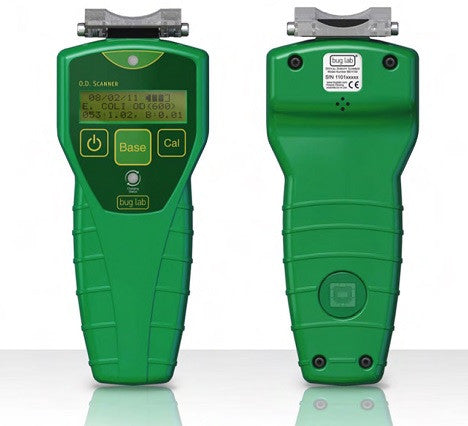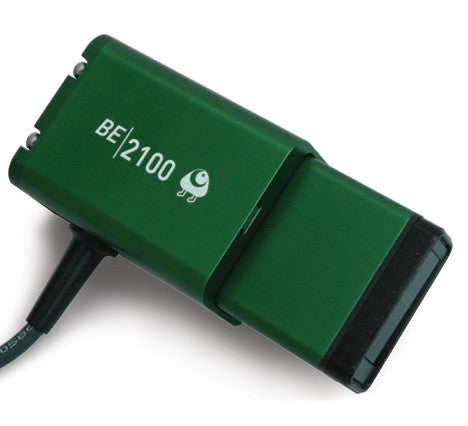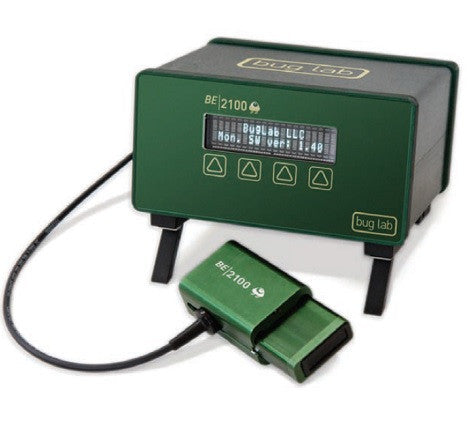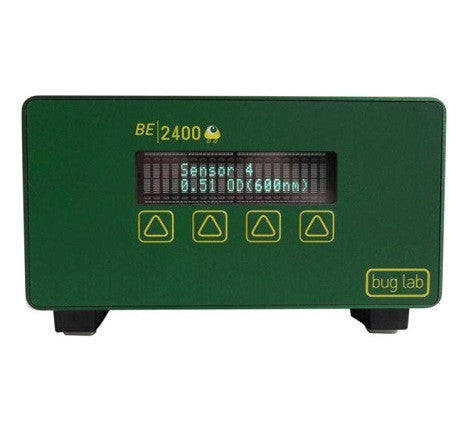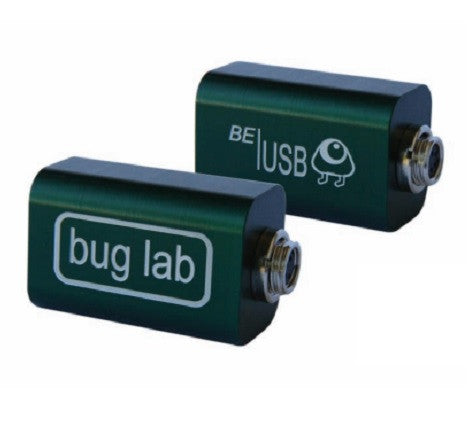OD Scanner - Handheld Biomass Monitor
Supplied By: Buglab, USA
Rs. 0.00
BugLab's OD Scanner: Handheld Biomass Monitor
BugLab's OD Scanner eliminates the need to open shake flasks to measure biomass. Simply point the sensor into a shake flask, and within 6 seconds, your biomass is complete. No more dilutions or wasted samples.
Quick Advantages
-
The world's first and only handheld biomass monitor
-
Measures biomass from shake flasks in seconds
-
No costly consumables
-
Completely noninvasive – measures through vessel wall
-
Measures 0-30 OD units without needing a dilution


Other Major Advantages and Benefits
Eliminates Liquid Handling:
Biglab's OD Scanner eliminates the need to open shake flasks to measure biomass. Simply point the sensor into the shake flask, and within 6 seconds, your biomass measurement is complete. No more dilutions or wasted samples
Accurate and Reliable:
The instrument directly reports biomass from 0.05 to 10g/L. High accuracy (<15% error) has been demonstrated across a wide range of vessel sizes (250 to 2000ml) and materials (glass, PC, PET). Proper alignment is ensured during each measurement by a pair of position sensors. Only 3cm of fluid needs to be present in front of the scanner during measurement. Redundant optical sensors are used to make sure sufficient fluid is present.
Simple Operation:
Measurements are automatically initiated when the position sensors are engaged against a shake flask. Correct placement is confirmed with audio and visual indicators. Subtraction of media absorption is accomplished by the press of a button. The batteries are charged automatically through the USB connector, and never need to be replaced.
Data Storage and Retrieval:
Up to 999 measurements can be stored and downloaded via USB to your PC. Data are tracked by date, time and measurement number. Custom calibrations (beyond those included with the instrument for dry cell weight of E.coli and S.cerevisiae) are easily uploaded to the instrument.
Low Maintenance:
No disposable parts are required for operations of the instrument. Annual instrument calibration and verification are available through BugLab LLC.
Comparing OD Scanner and Direct Determination:
The graph represents the comparison of Biomass (g/L) of S.cerevisiae measured by the OD Scanner vs. Direct Determination. The OD Scanner measurements were performed directly through the vessel wall of 250ml PET shake flasks, using the standard S.cerevisiae calibration provided with the instrument.

Theory of Operation-Back Light Scattering
-
A near infrared (NIR) laser is injected into the medium. Interaction with cells creates a glow ball of scattered light.
-
Photo-detectors collect light back-scattered from the glow ball.
-
The intensity of the detected light is proportional to optical density.
Note: The OD Scanner is an optical instrument and will only operate on transparent glass or plastic vessels that have at least 3 cm depth of fluid within the measurement area (directly in front of the sensor window). The instrument is specifically designed for use on small vessels, such as shake flasks, with a wall thickness of 5 mm, or less. The instrument is not designed for use with and may not measure accurate biomass measurement on vessels such as bioreactors with walls or site glasses having thickness greater than 5 mm.
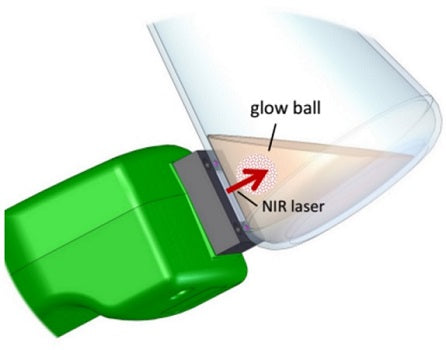

OD Scanner Specifications
Environment:
The handheld Biomass monitor - OD Scanner, is water resistant and can be operated in ambient environments ranging between 15 and 40°C, and 0 and 90% RH. The instrument should be stored within a temperature range of -20 to 60°C
Power:
The OD Scanner is powered by 2 AA low self discharging NiMH batteries. The batteries are provided pre-charged and pre-installed in the instrument. Battery charging from a fully discharged state takes approximately 14 hours. The batteries can be recharged as many as 1500 times.
OD Scanner Instrument Components

OD Scanner Software
The OD Scanner software, written in the LabVIEWTM programming environment, is a data logging program. It gives you the ability to download data from the Hand Held OD Scanner then select subsets of the data, such as a series of samples, sample dates or sample numbers, and save the data to a text file. This can all be uploaded to an excel file for your reporting purposes.
The software also allows you to calibrate your OD Scanner to the reference units of your choice. You can correlate your Hand Held OD Scanner to your offline spectrophotometer using this method (as shown in the operators manual). This calibration can then be uploaded into instrument memory, allowing the OD Scanner instrument to run in calibrated mode without being connected to a computer.


Frequently Asked Questions
Q: Can you measure through any vessel type?
The hand held OD Scanner has been demonstrated across a wide range of vessel sizes (250 to 2000 mL) and materials (glass, PC, PET). The vessel wall must be less than 5 mm or less in wall thickness.
Q: What is the minimal volume of fluid can I measure?
A minimum of 3 cm of fluid needs to be present in front of the scanner during measurement. A 20% fill volume in a 250ml (or larger) flask, is typically suitable with a proper tilt of the flask. (see video for demonstration)
Q: What cell types do you measure with the OD scanner?
Most mono-dispersed cell types can be measured. The relationship between OD and biomass is non-linear for organisms that are not mono-disperse in a liquid culture (we should note that this is true for most conventional measuring means as well). As a result, OD can only be expected to provide an accurate measure of biomass for mono-disperse liquid cultures. For organisms that grow in clusters, OD can only be expected to provide a qualitative estimate of biomass.
Q: What is the range of OD the BEH100, Hand Held OD Scanner measures?
The OD scanner has a measuring range from 0-10 g/l. This has a correlation of approximately 0-30 OD units for most cell types (e.g. Saccharomyces Cerevisiae, E.Coli).
Q: Does the sensor respond to color in the media?
One of the advantages of using an infrared laser source for measuring biomass is the avoidance of light absorbance by colored media components (and colored vessel materials). This is useful for measuring biomass containing strongly visible-light-absorbing chromophores (e.g. photosynthetic algae).
Q: How do you download the data?
The sensor will store up to 999 measurements. At any given time, the user can download the data, via the USB, to our data logging software. Please see take a look at the software from the products page.
Related Products

